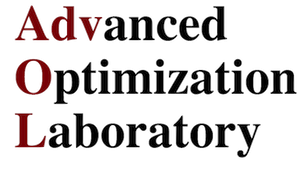| Speaker: | Prof. Achille Messac |
| Director, Multidisciplinary Design and Optimization Laboratory | |
| Chair of the MDOTC of the American Institute of Aeronautics and Astronautics | |
| Department of Mechanical, Aerospace, and Nuclear Engineering | |
| Rensselaer Polytechnic Institute |
Brief-Bio
Title: Physical Programming: Optimization for Industry
Optimization technology has reached the requisite level of maturity to warrant its integrative and pervasive use in engineering design. In addition, optimization is being effectively applied in a growing set of non-engineering areas, which include the financial markets. Key contributing factors in the current vibrant growth of the optimization field are the drastic and continual reduction of the cost of computation, as well as the recent inclusion of optimization capabilities in a growing number of engineering software products.
In tandem with these highly positive developments, unfortunately, one critical phase of the optimization process is in a state of anachronism. This process involves the formation of an aggregate objective function, which - if properly formulated - represents the designer�s preferences in their full complexities. It can be shown in theory and in practice that the prevailing approaches to forming aggregate objective functions generally yield less-than-satisfactory results, unless one engages in the typical ad hoc weight-tweaking process. This practice of tweaking scalar numerical weights in seeking adequate objective functions makes the application of optimization unappealing to the novice, and often frustrating even to the expert.
The physical programming method, developed by the speaker and his collaborators, addresses these and other roadblocks to the significantly increased application of optimization in industry. The application of physical programming requires negligible optimization knowledge from the part of the user. This new method has proven effective in a growing number of engineering areas, from product family design to robust design. Applications range from the High Speed Civil Transport plane design to manufacturability, cost, production planning, and control optimization. This talk will present the key aspects of the physical programming method, and will address issues of interest to the optimization expert as well as those with merely initial knowledge of optimization. Time permitting, the rudimentary elements of a software embodying the method will be briefly demonstrated. This talk should hopefully motivate audience members to recognize potential applications of optimization in their research and development efforts.


